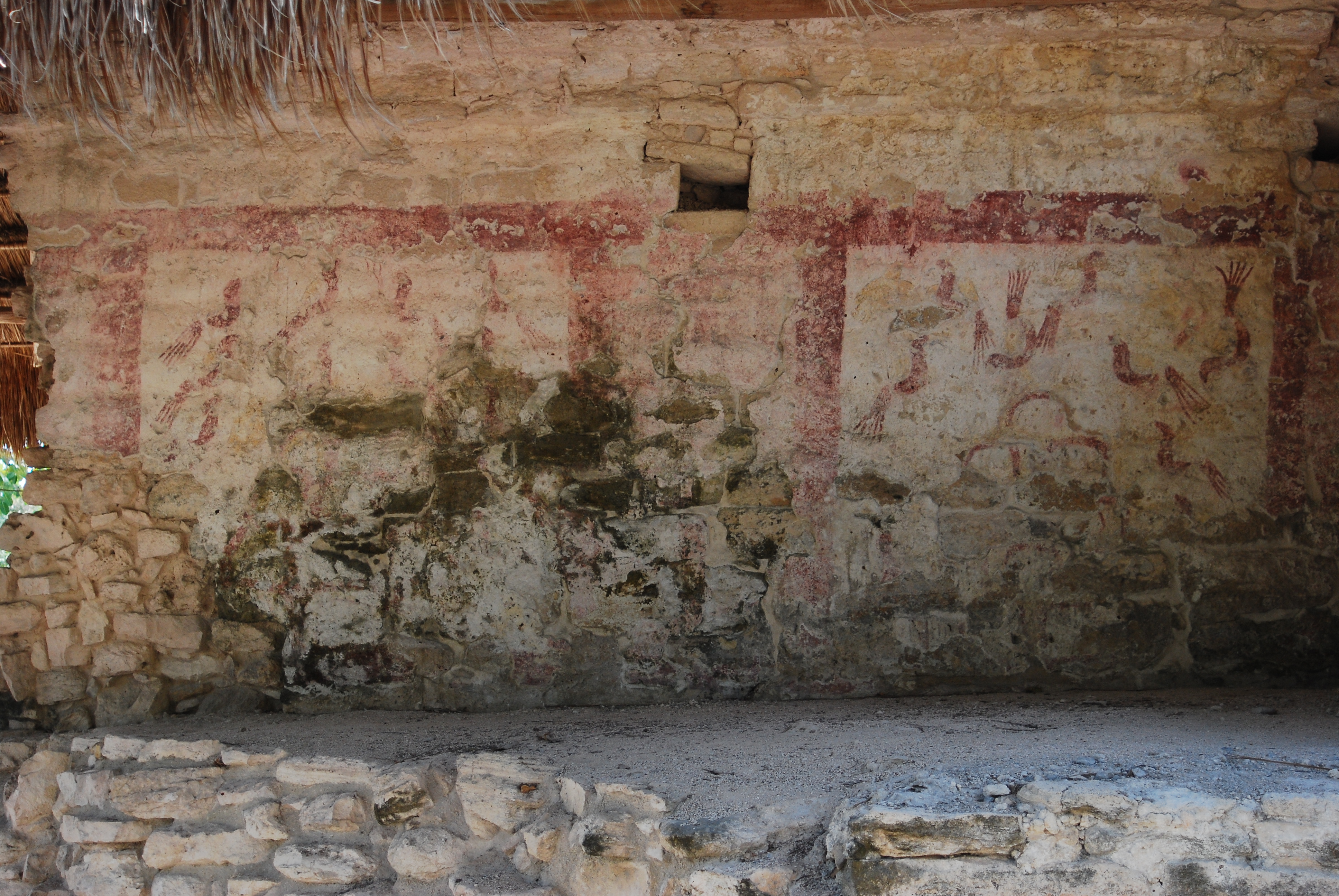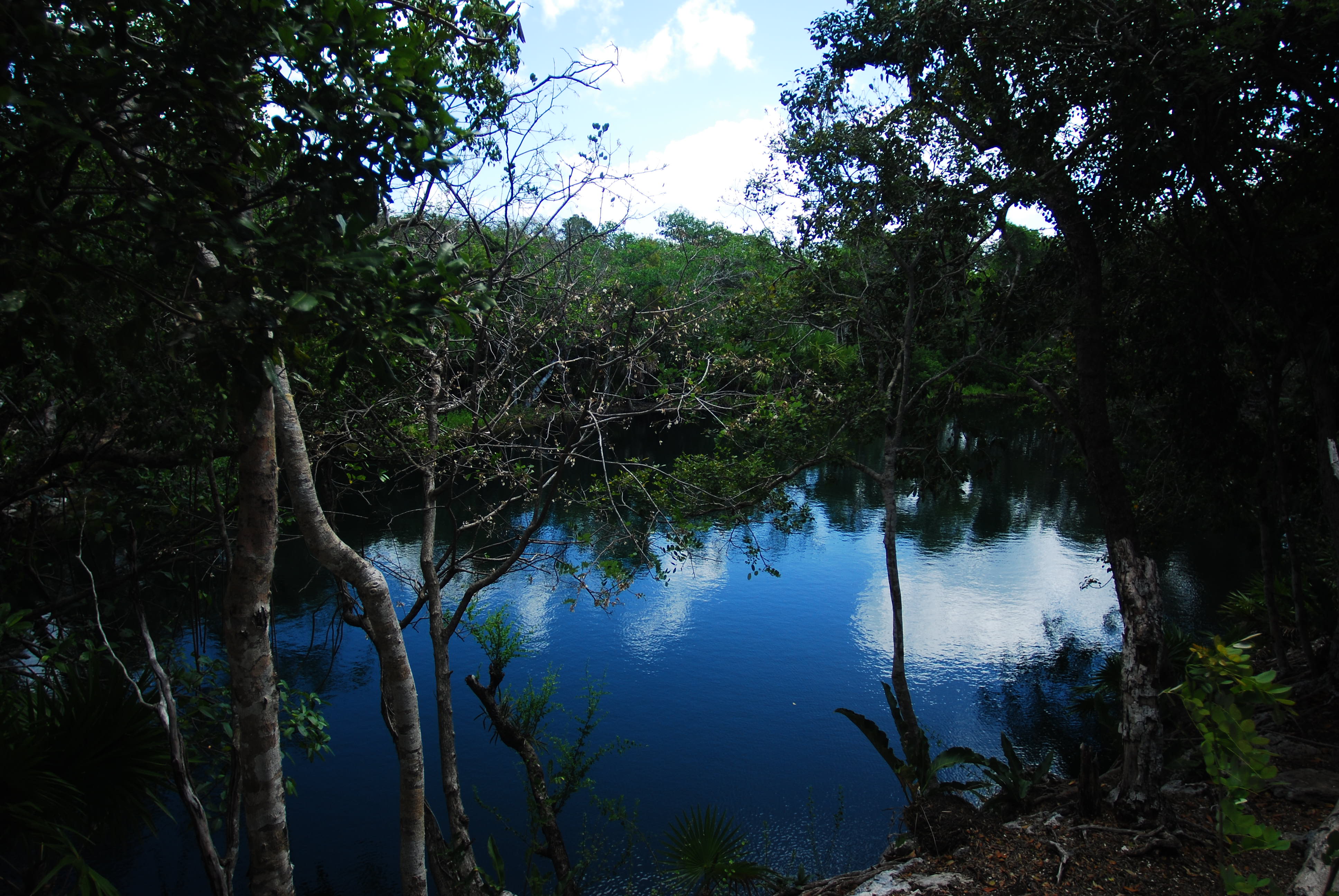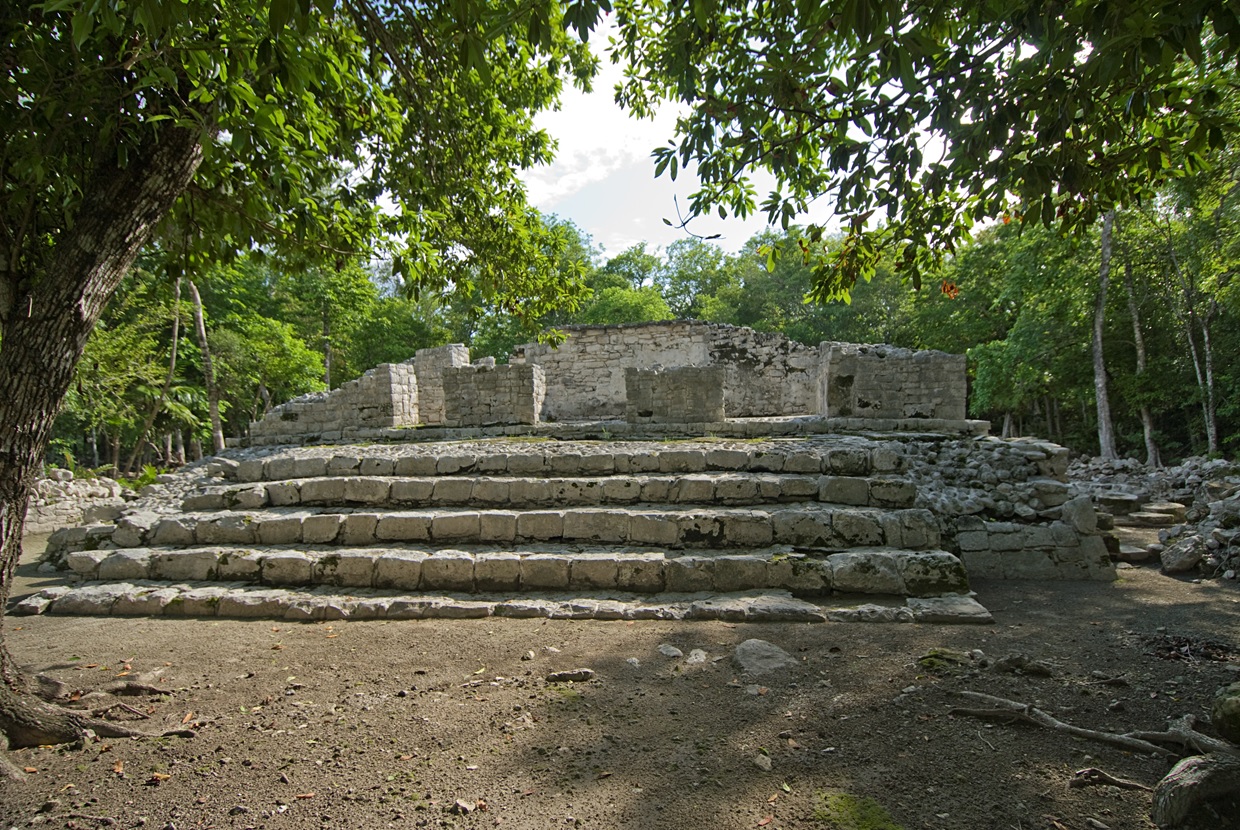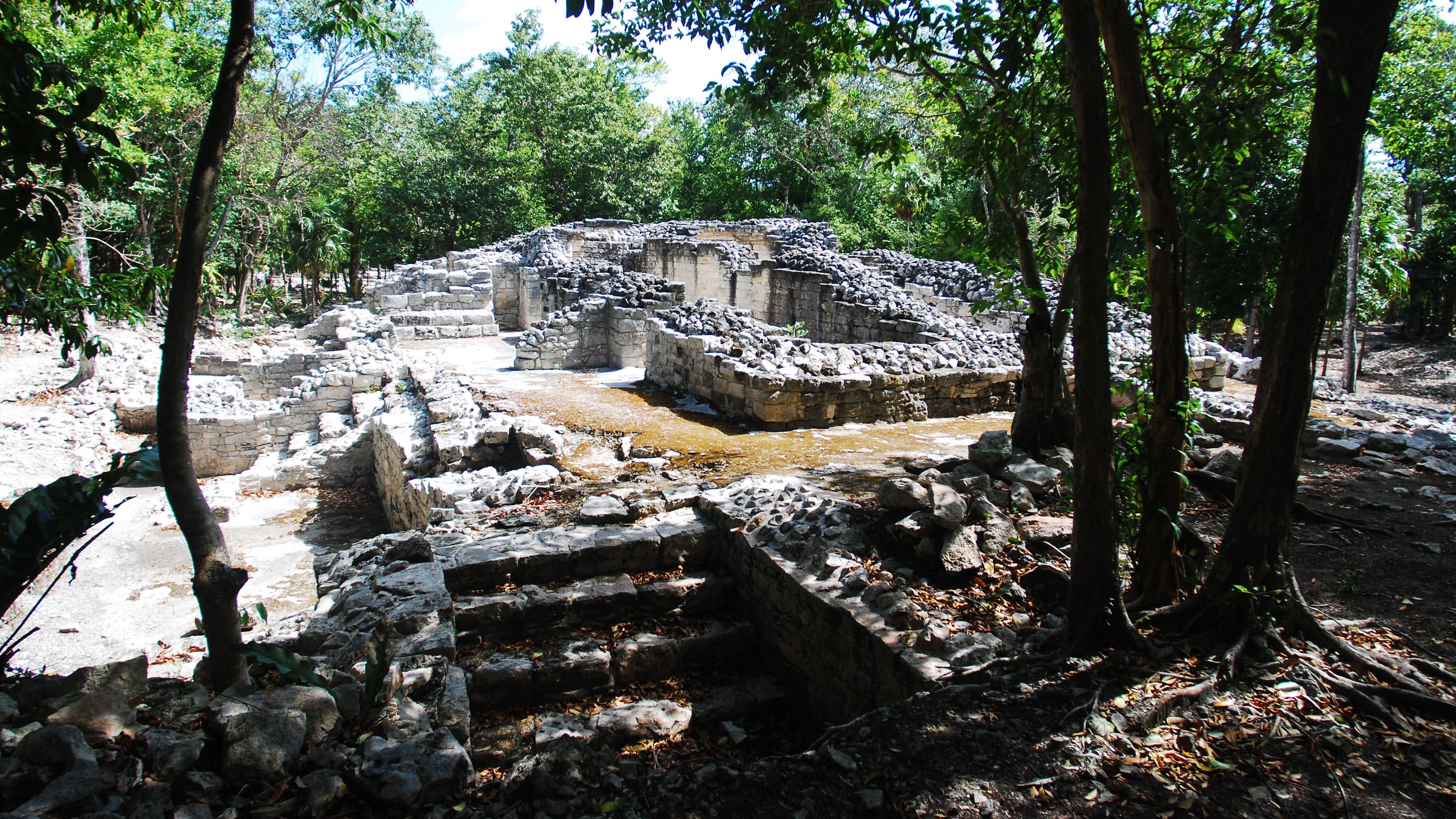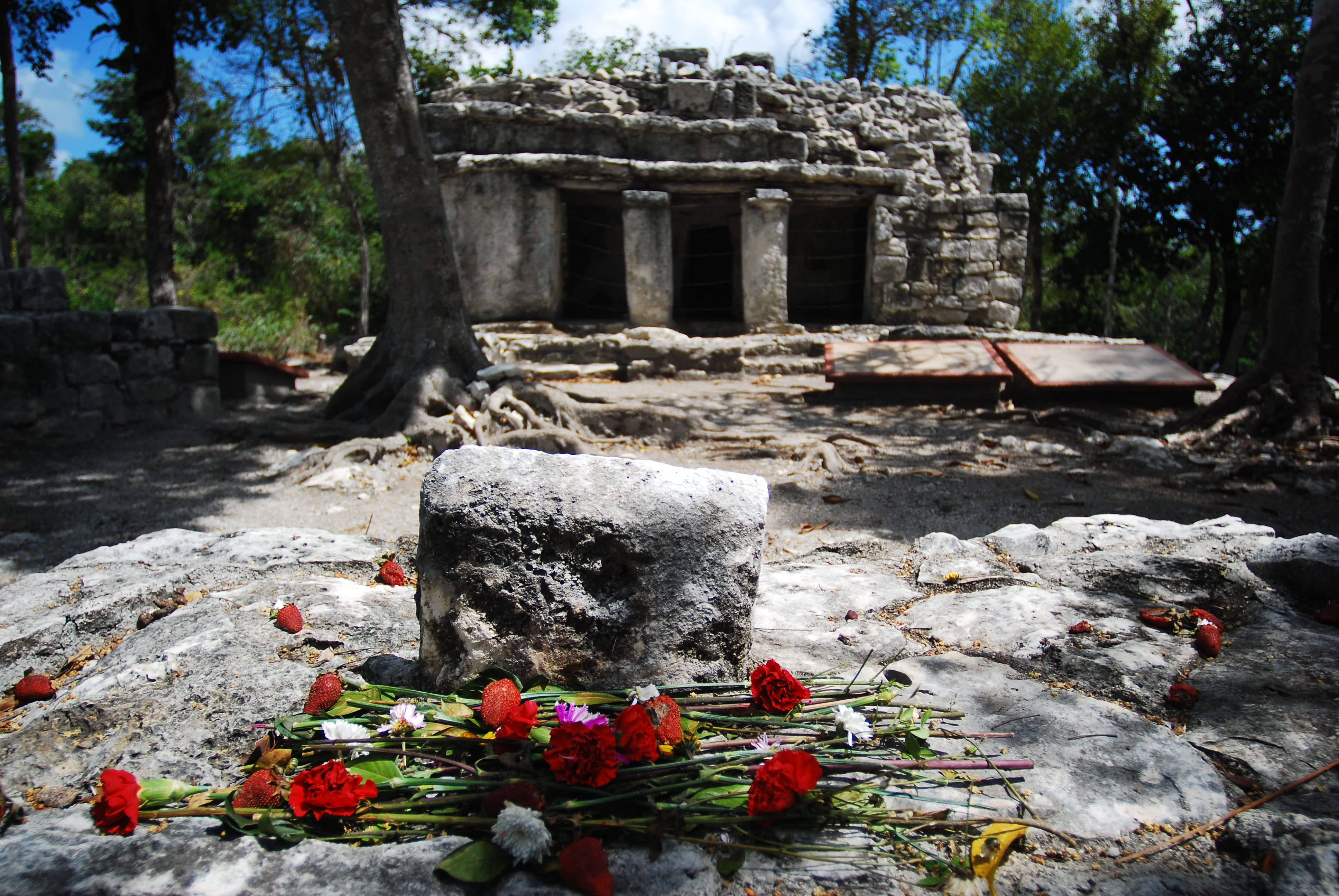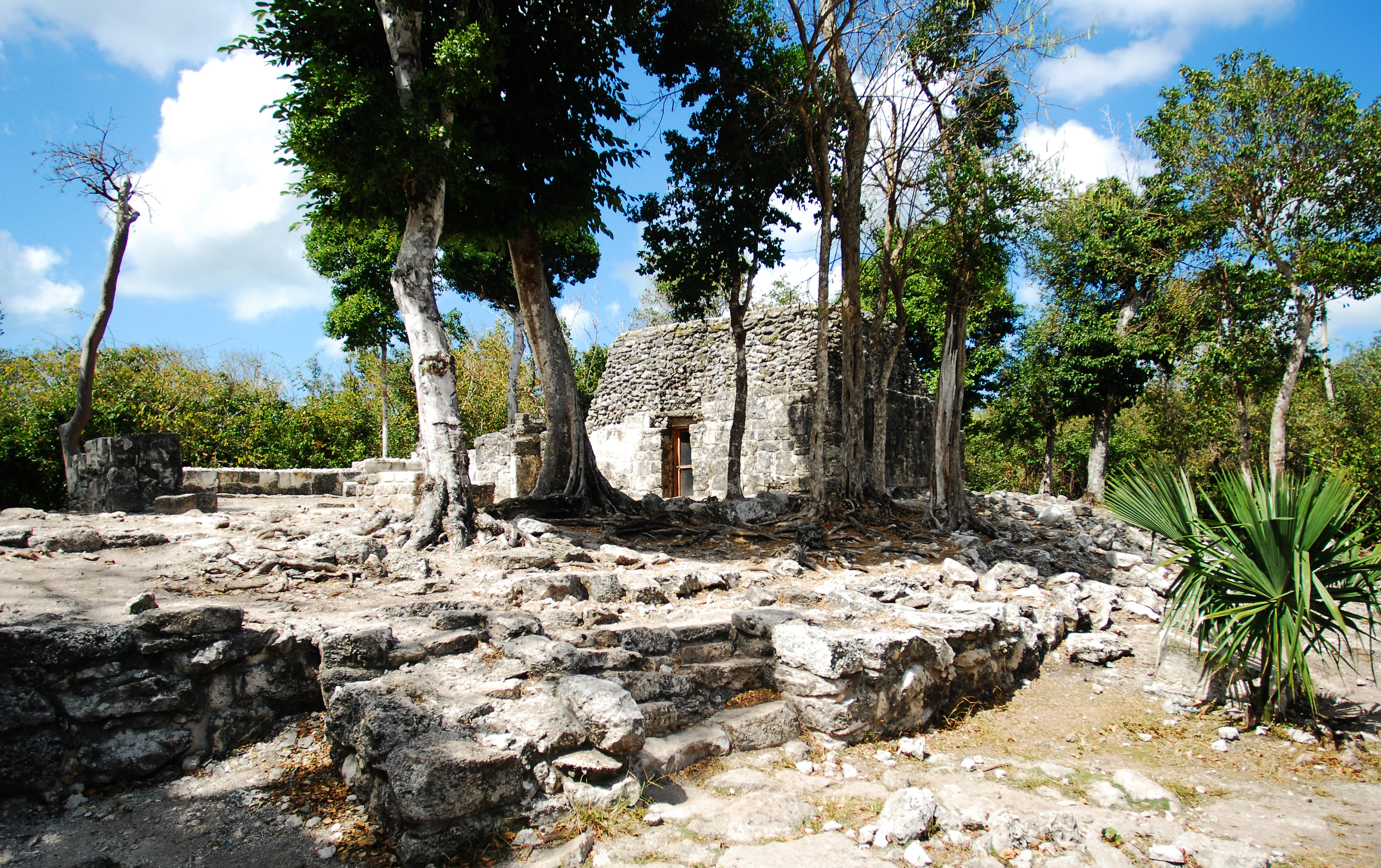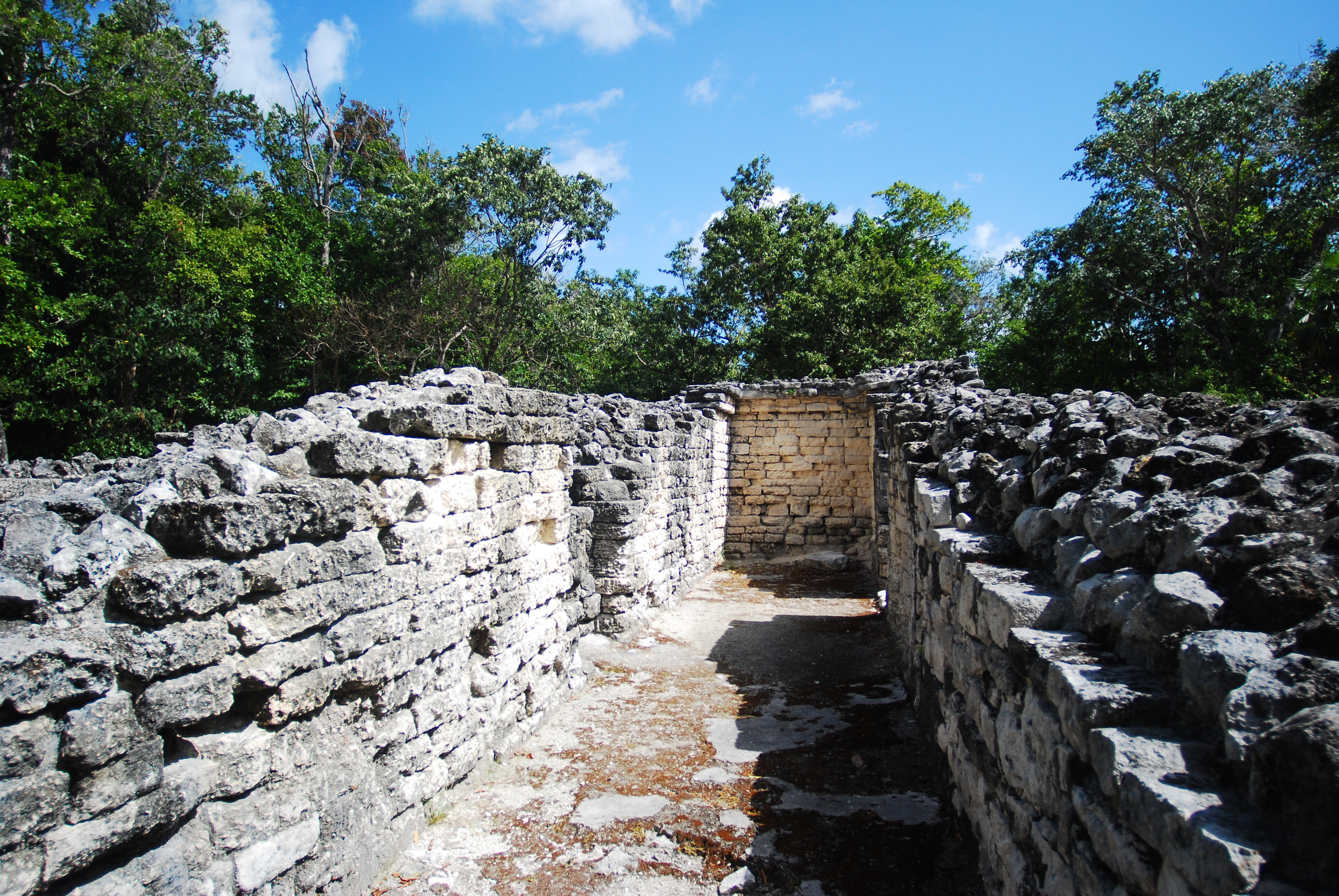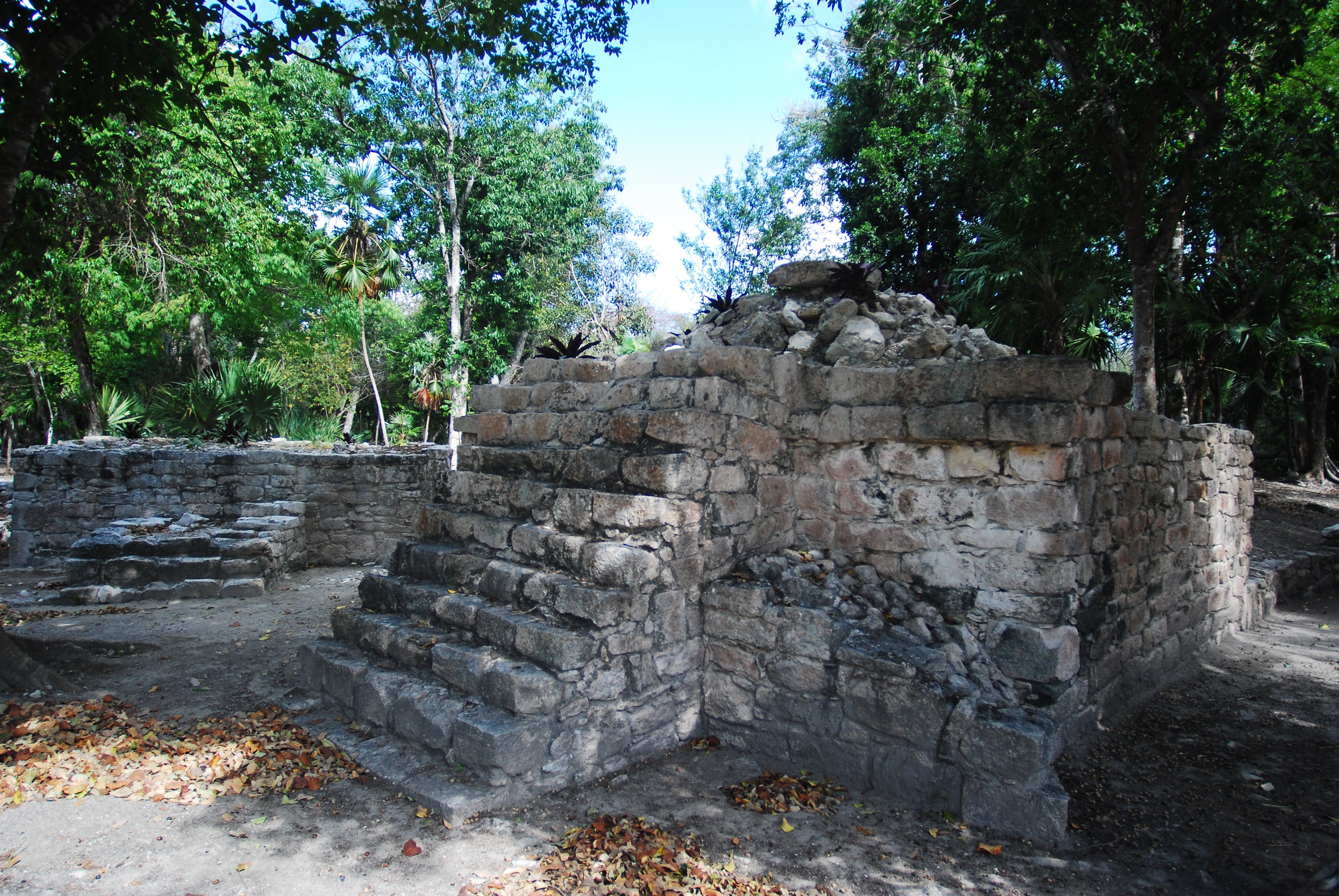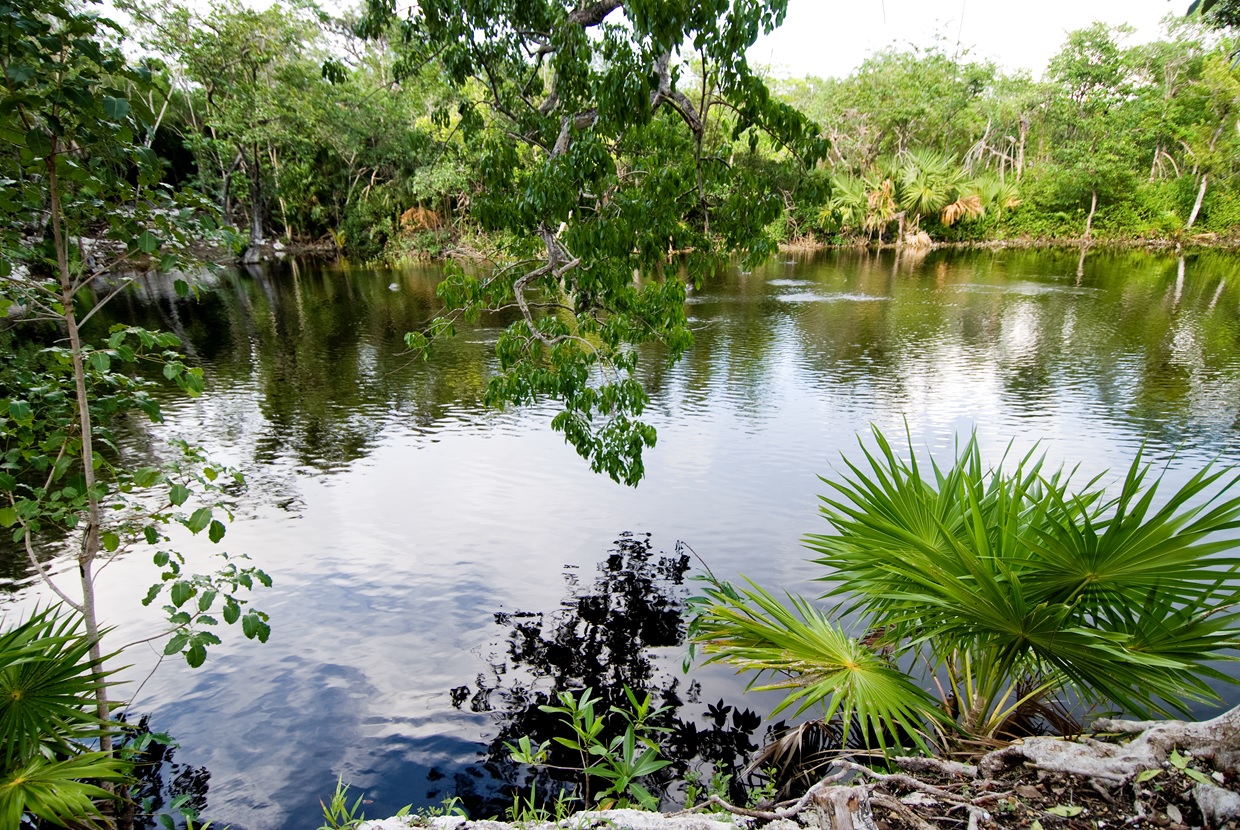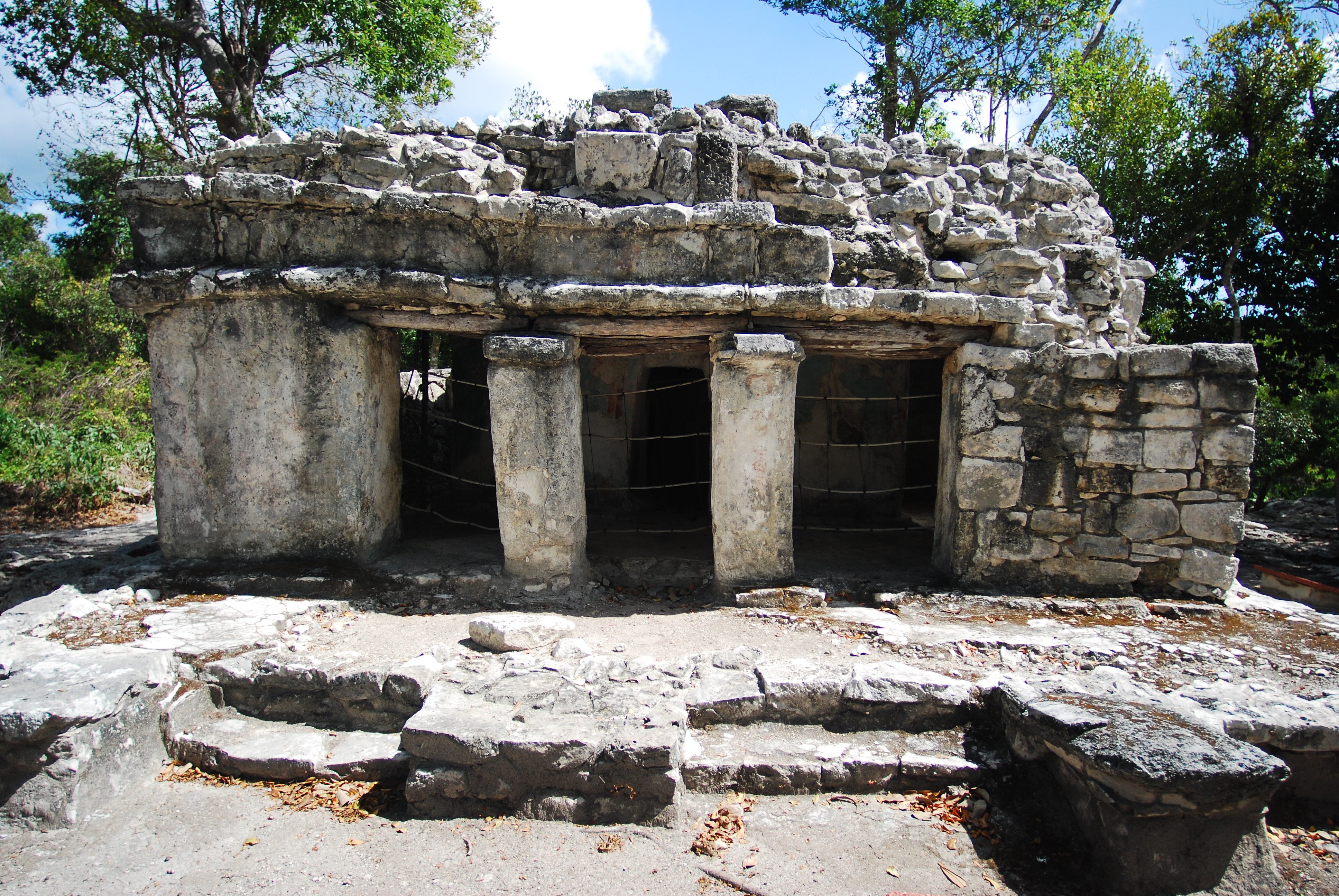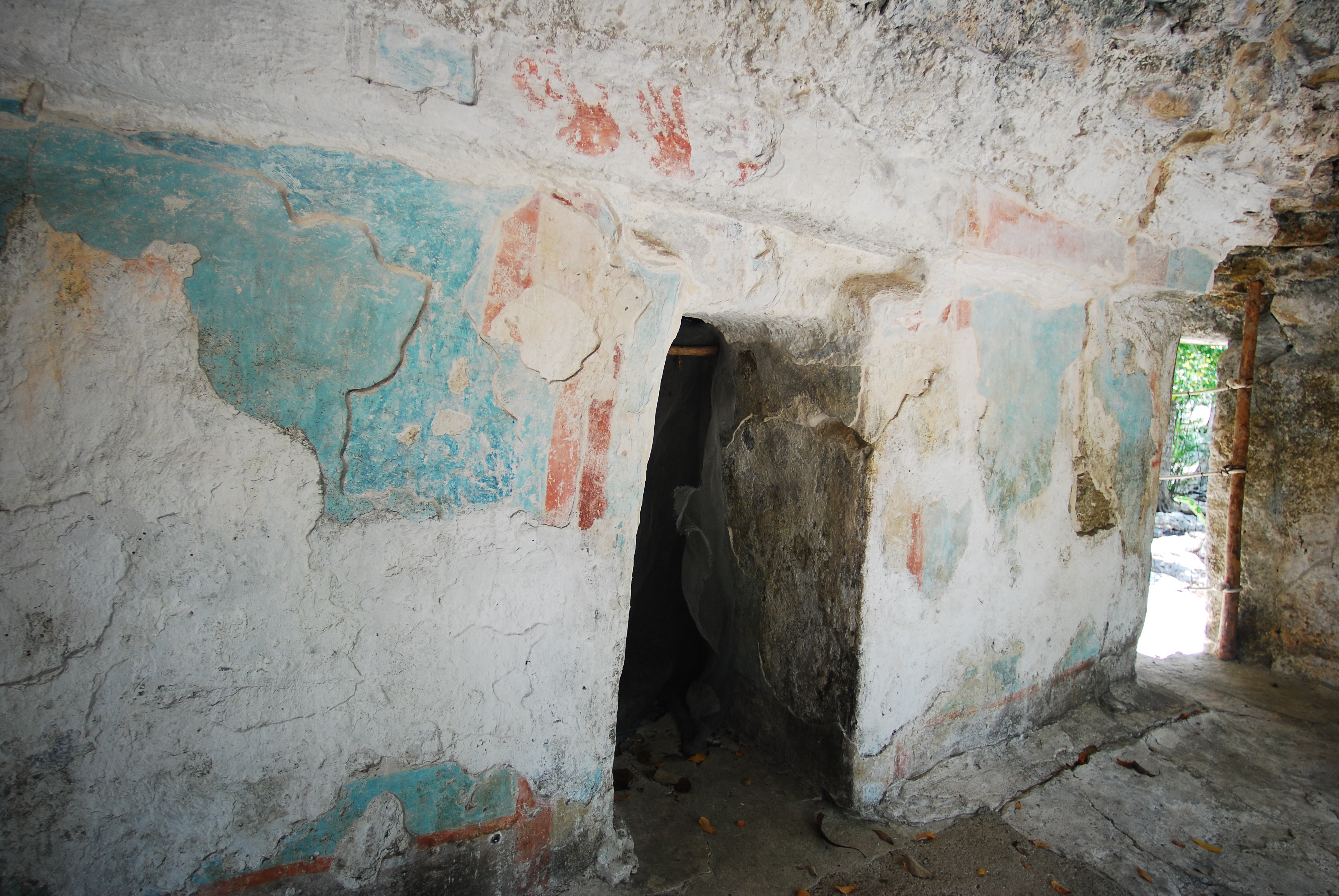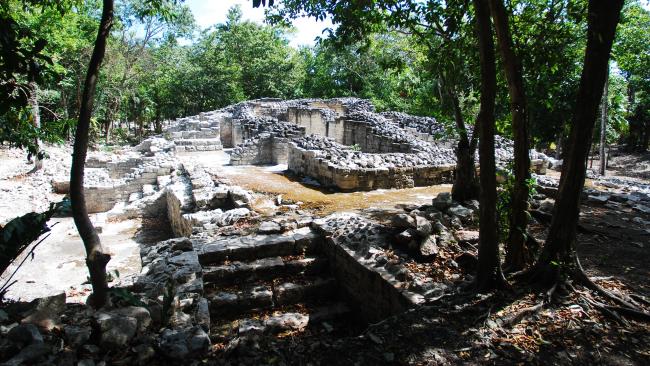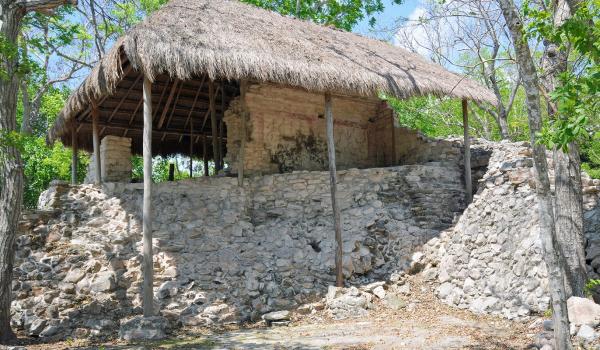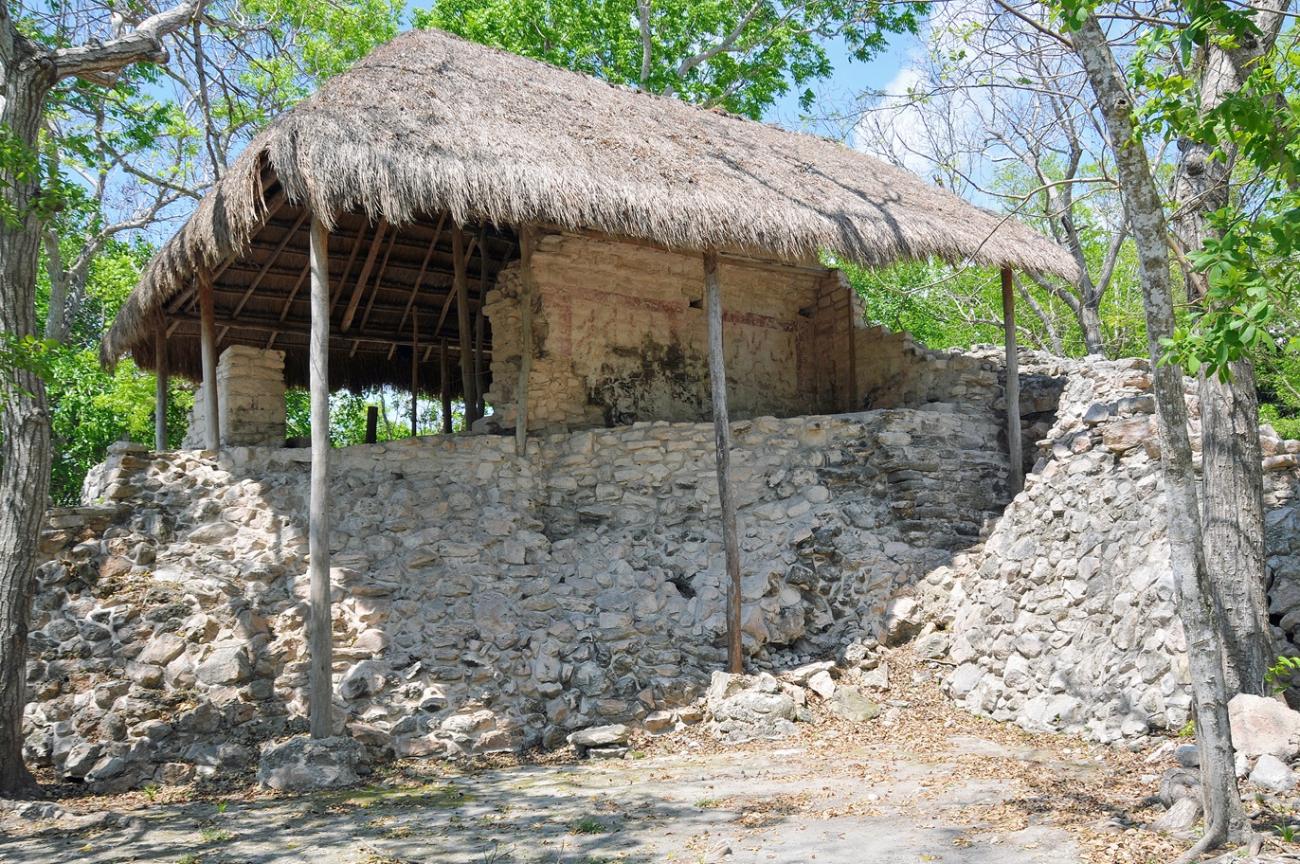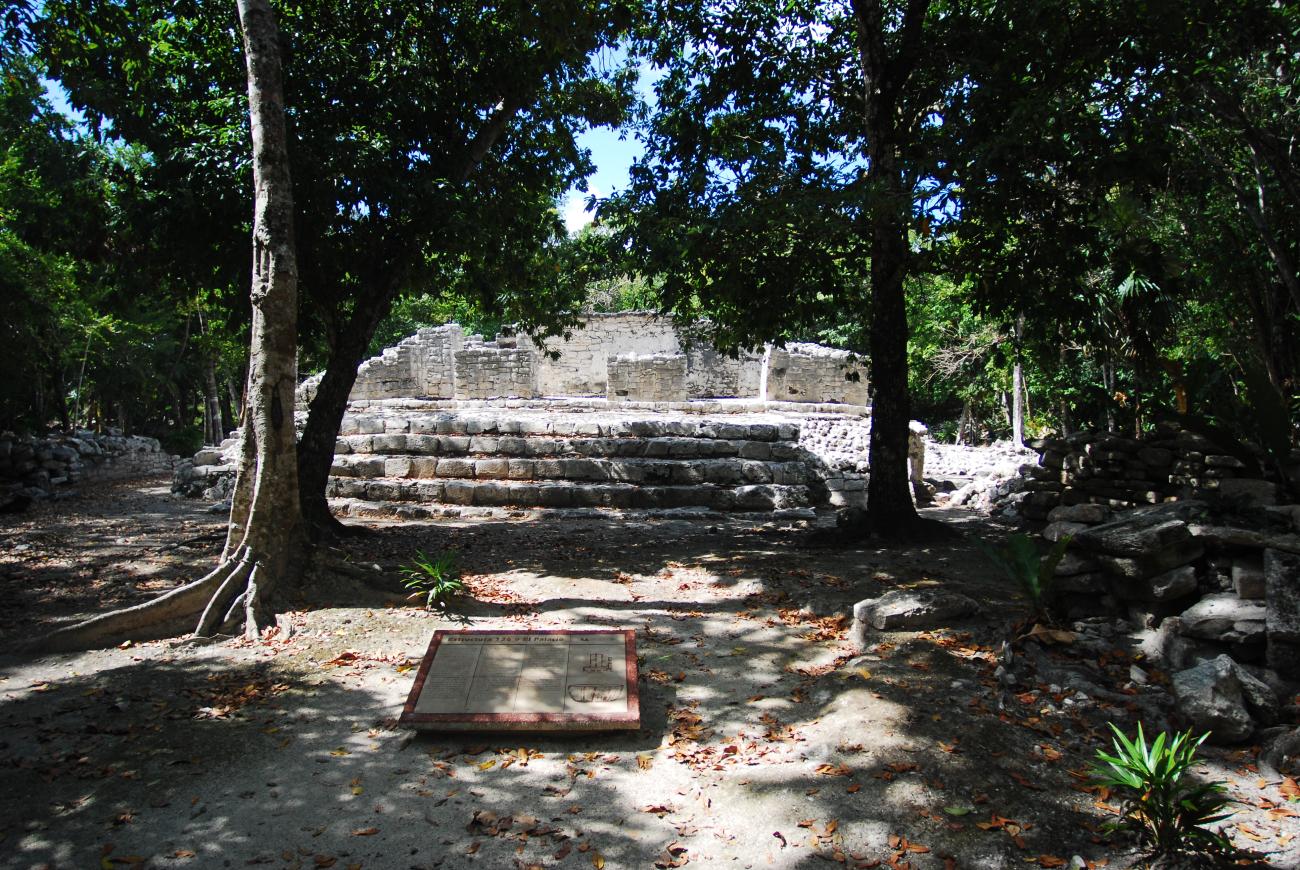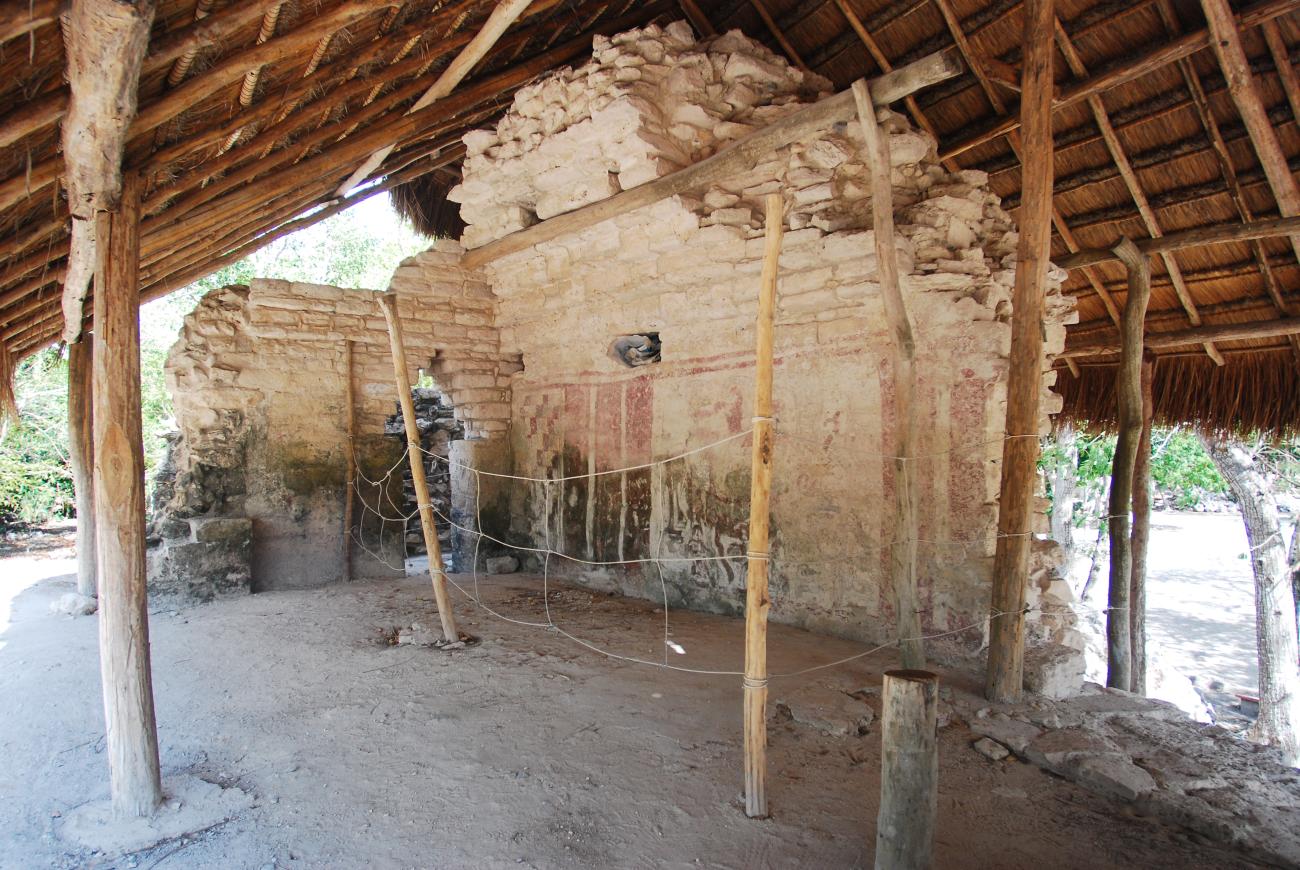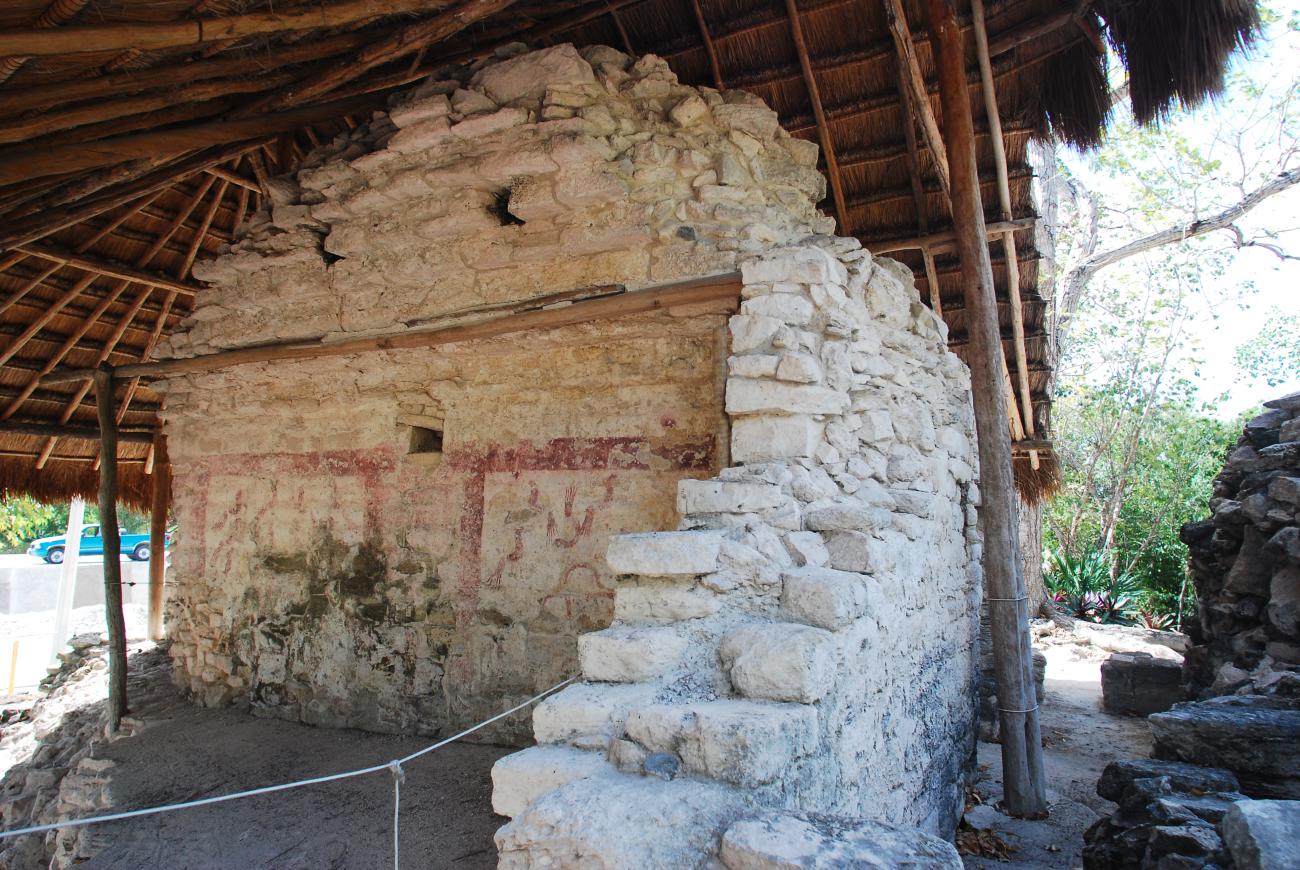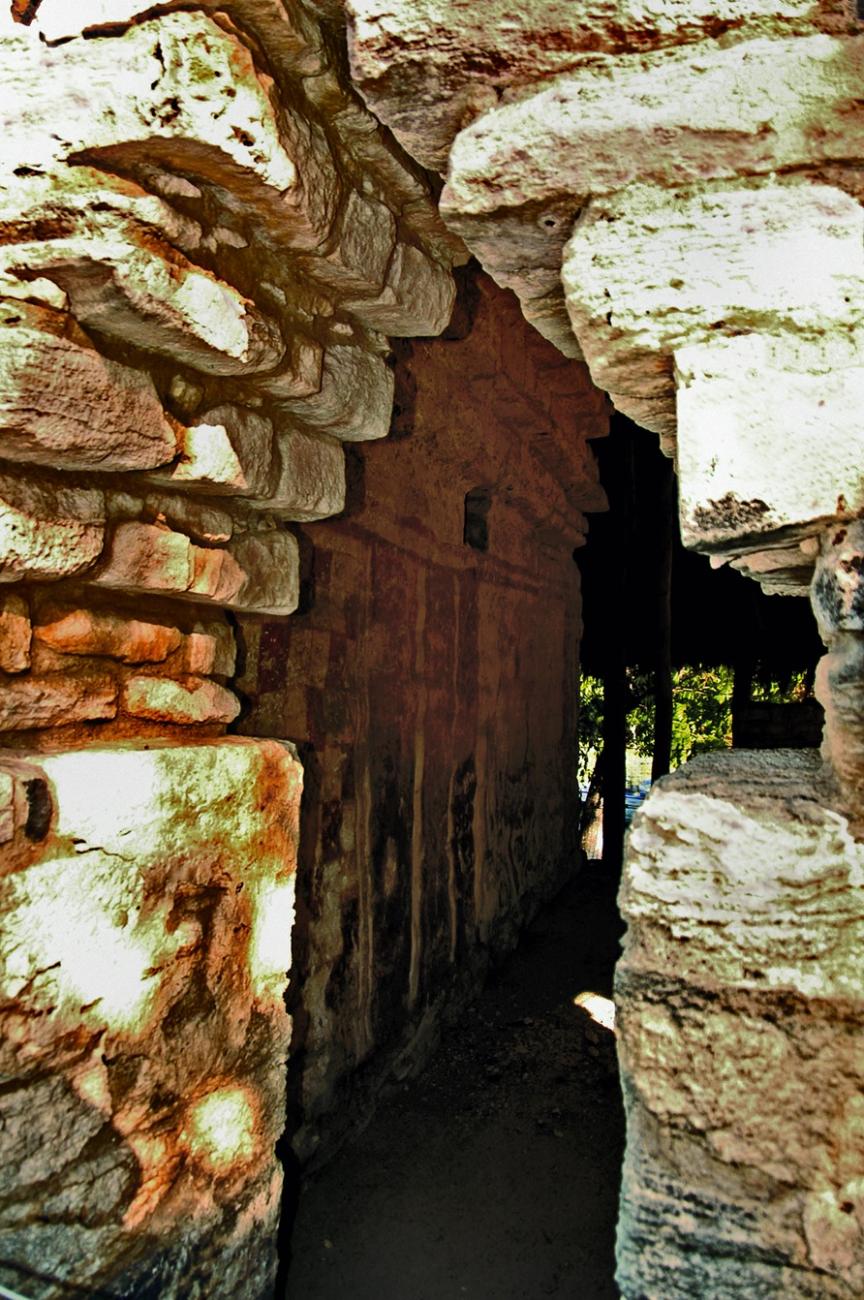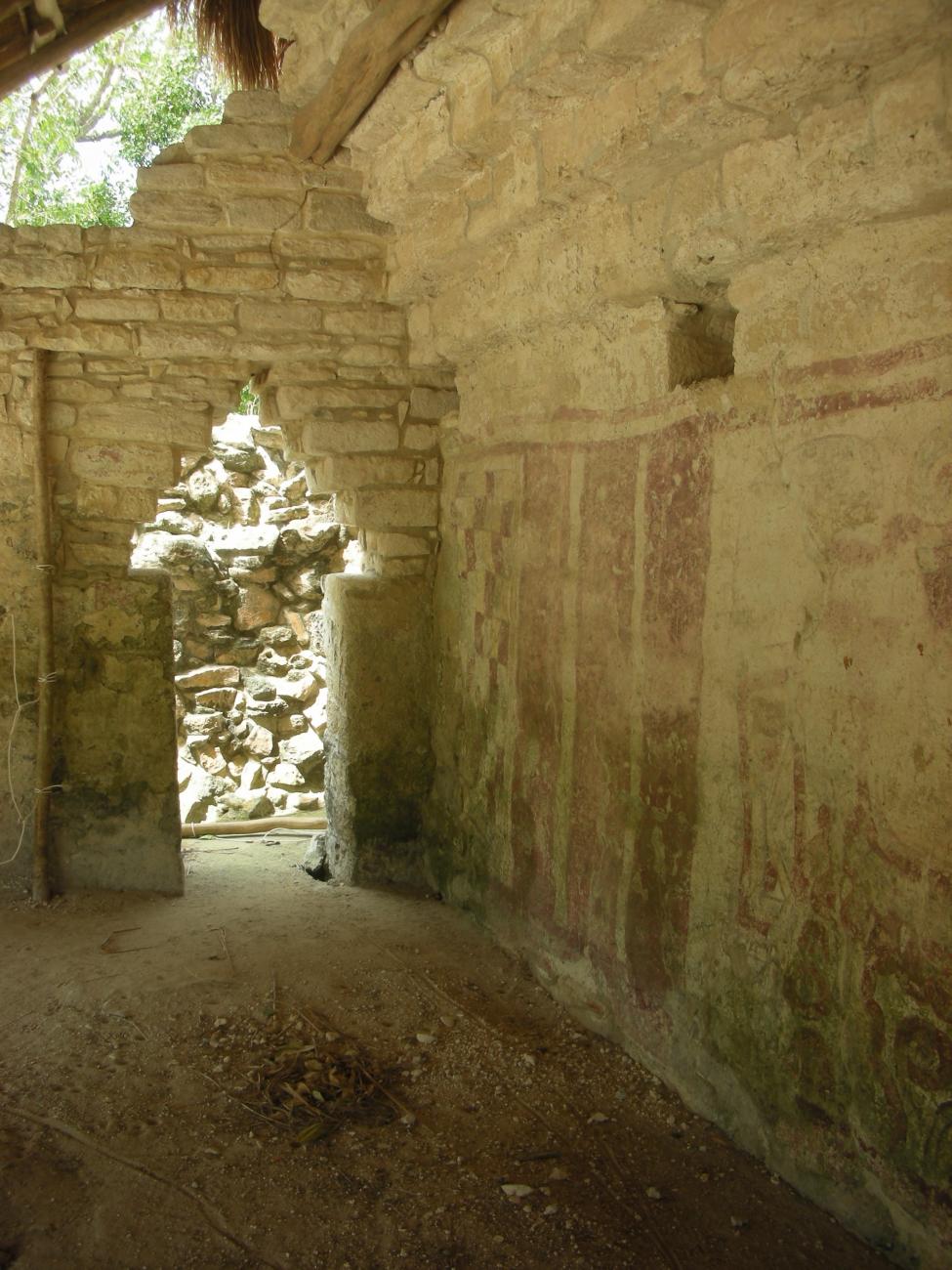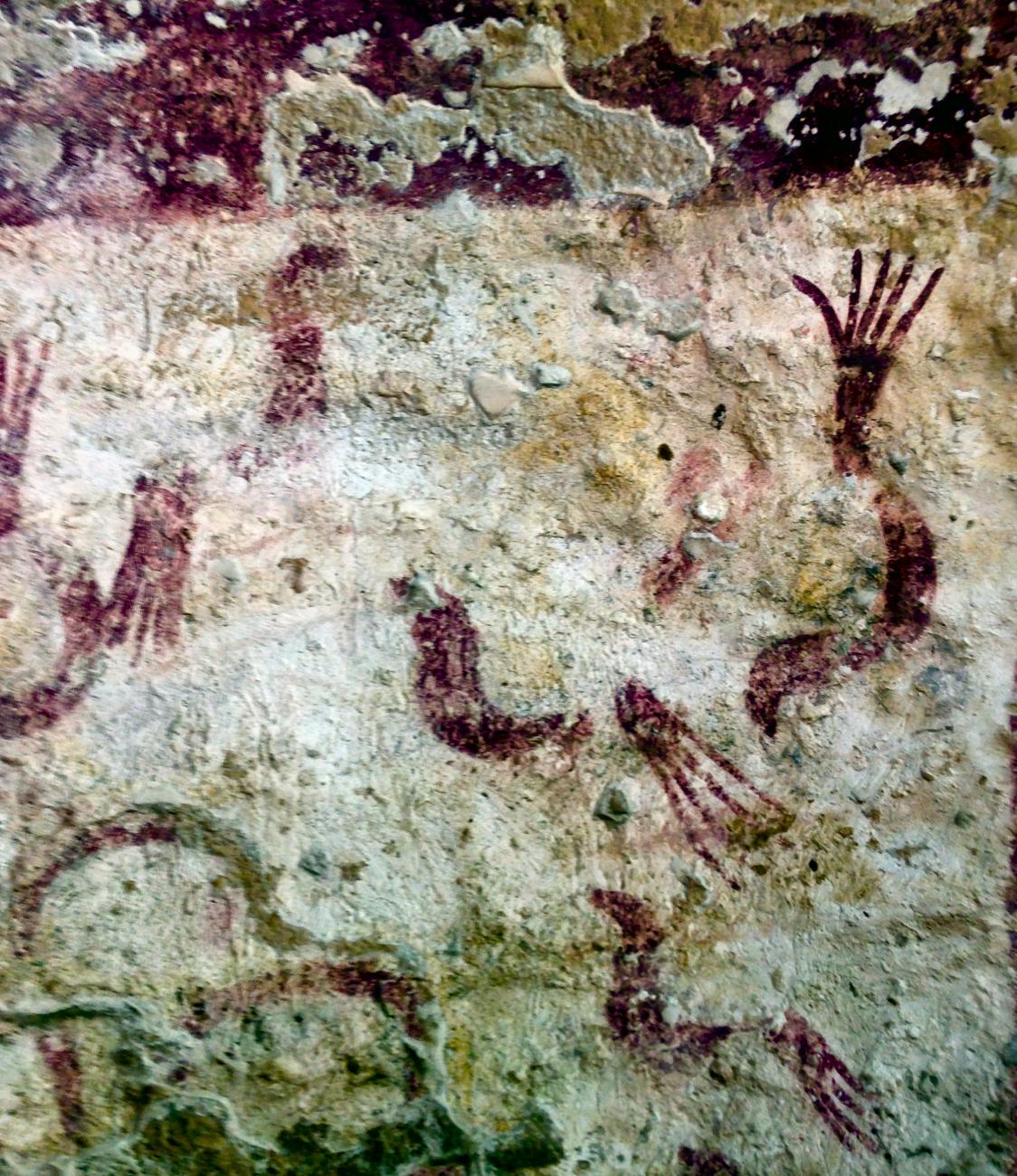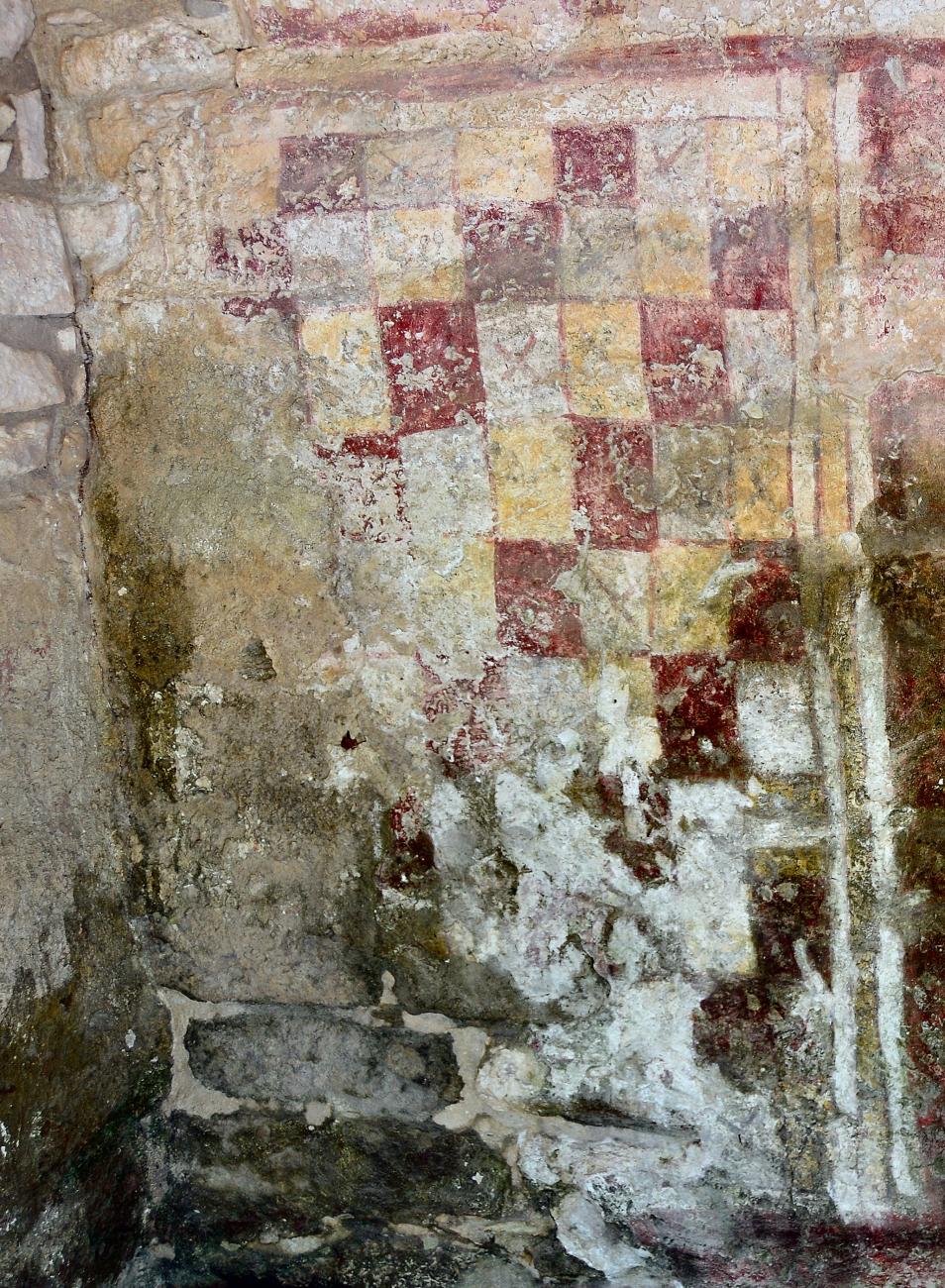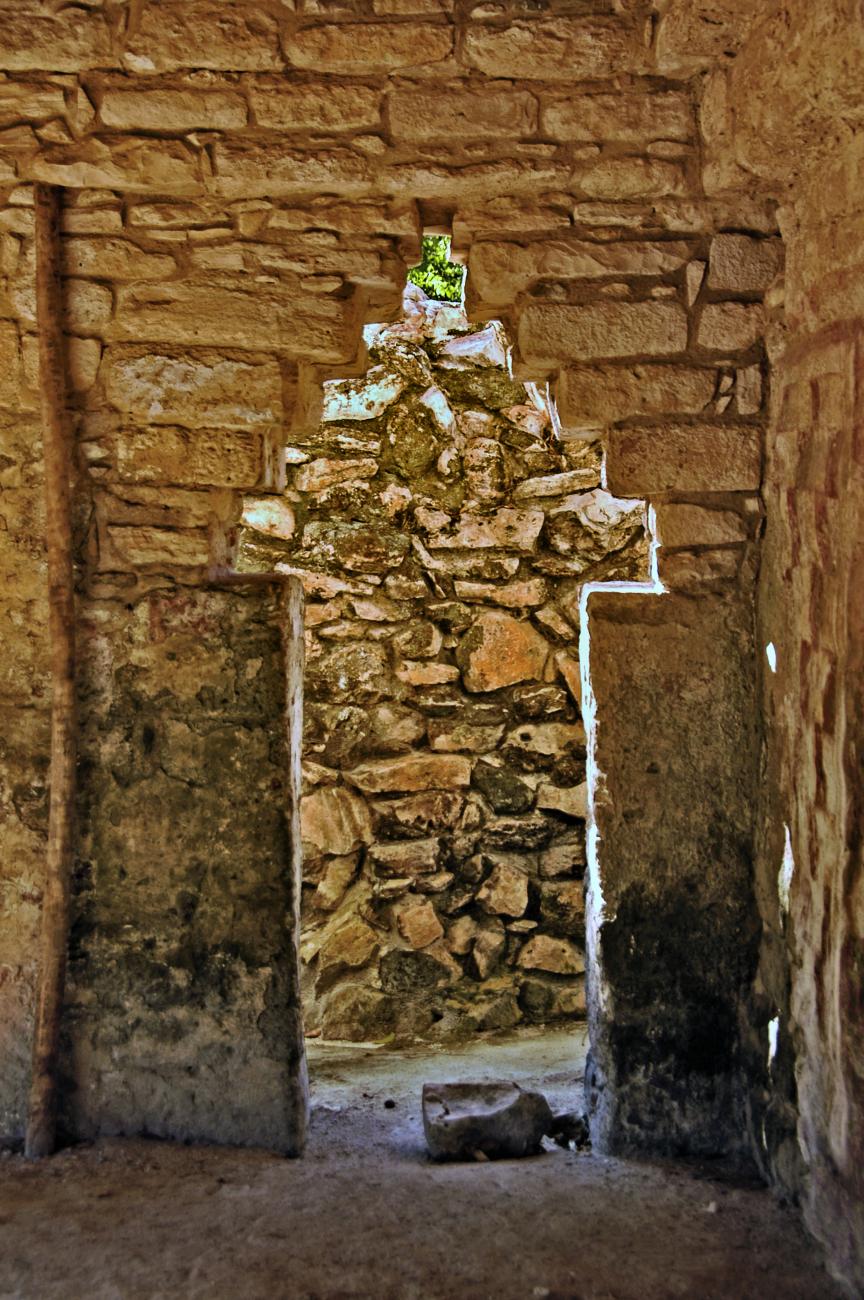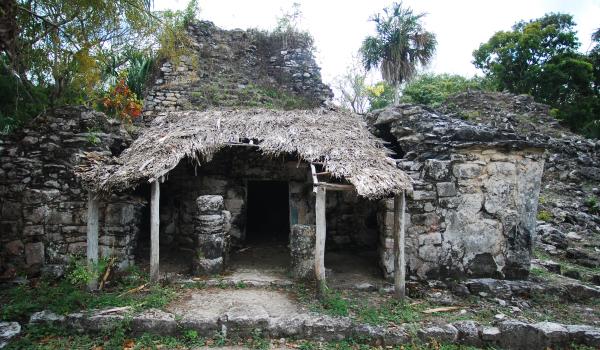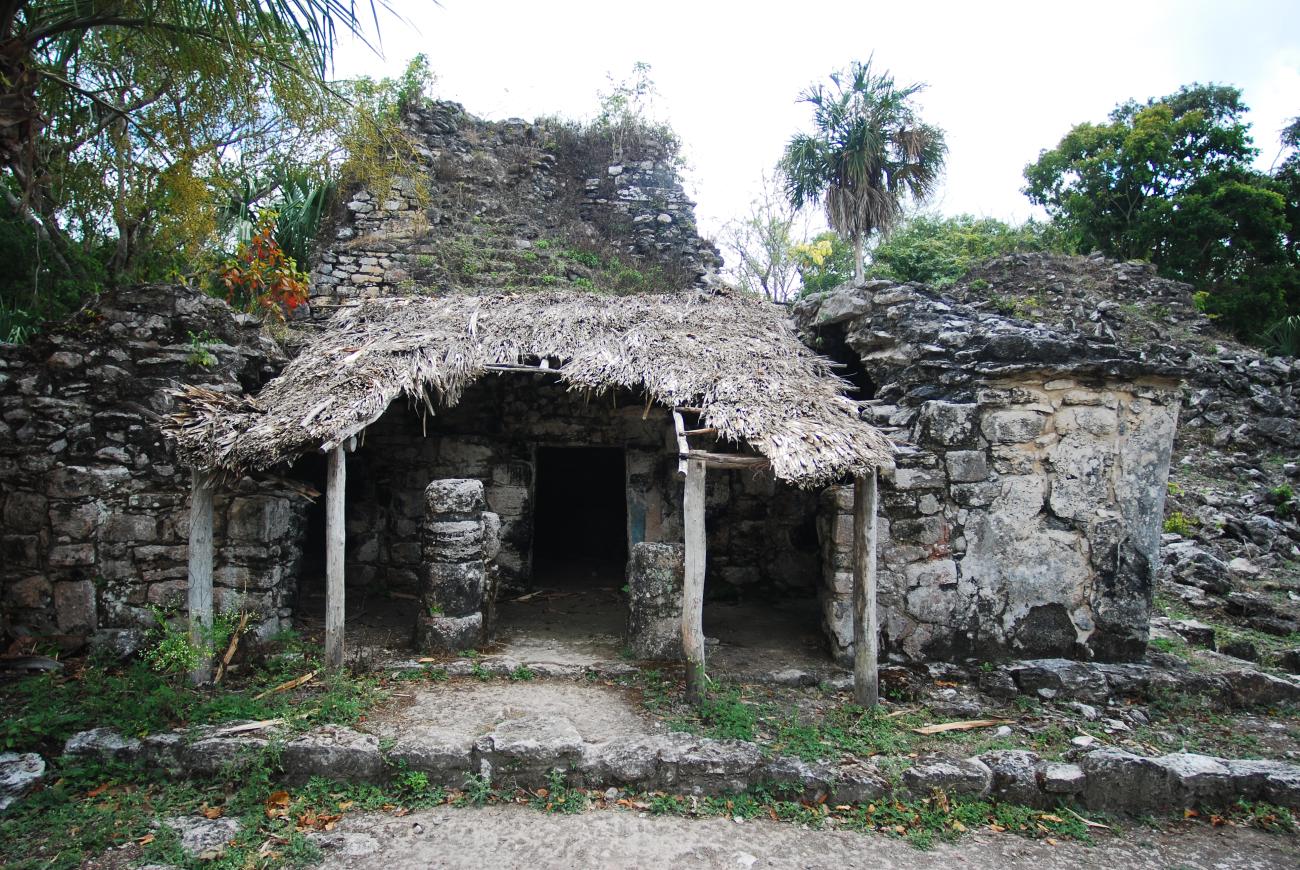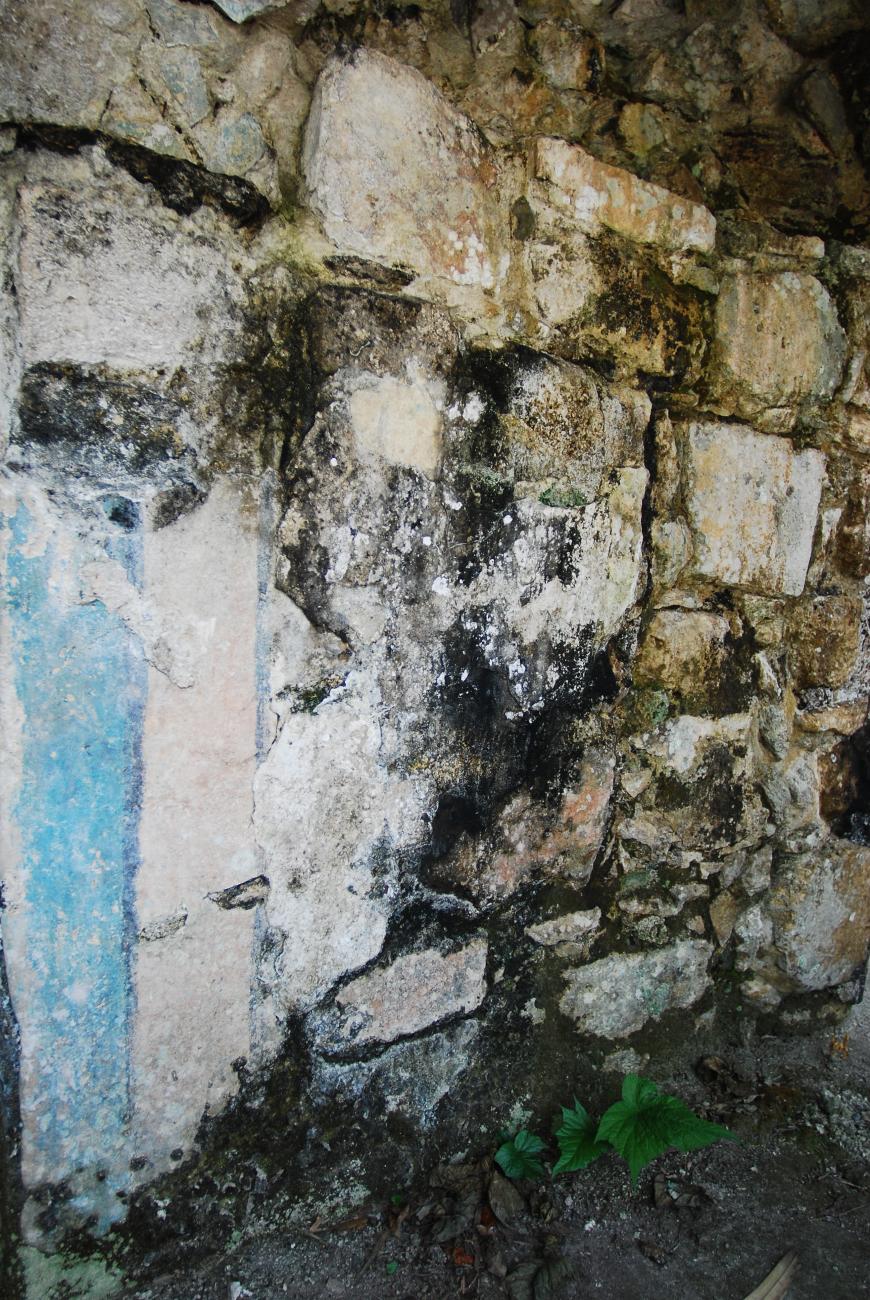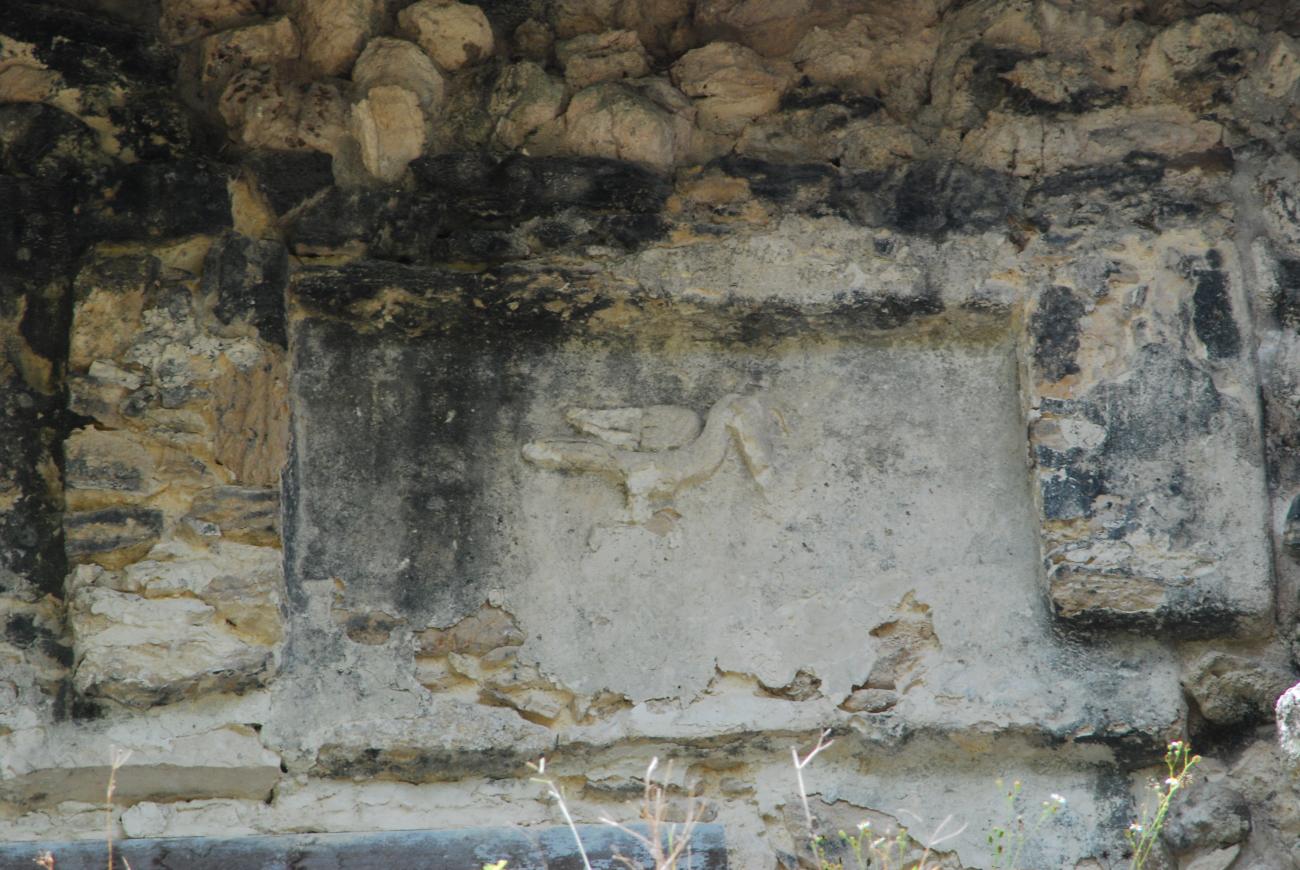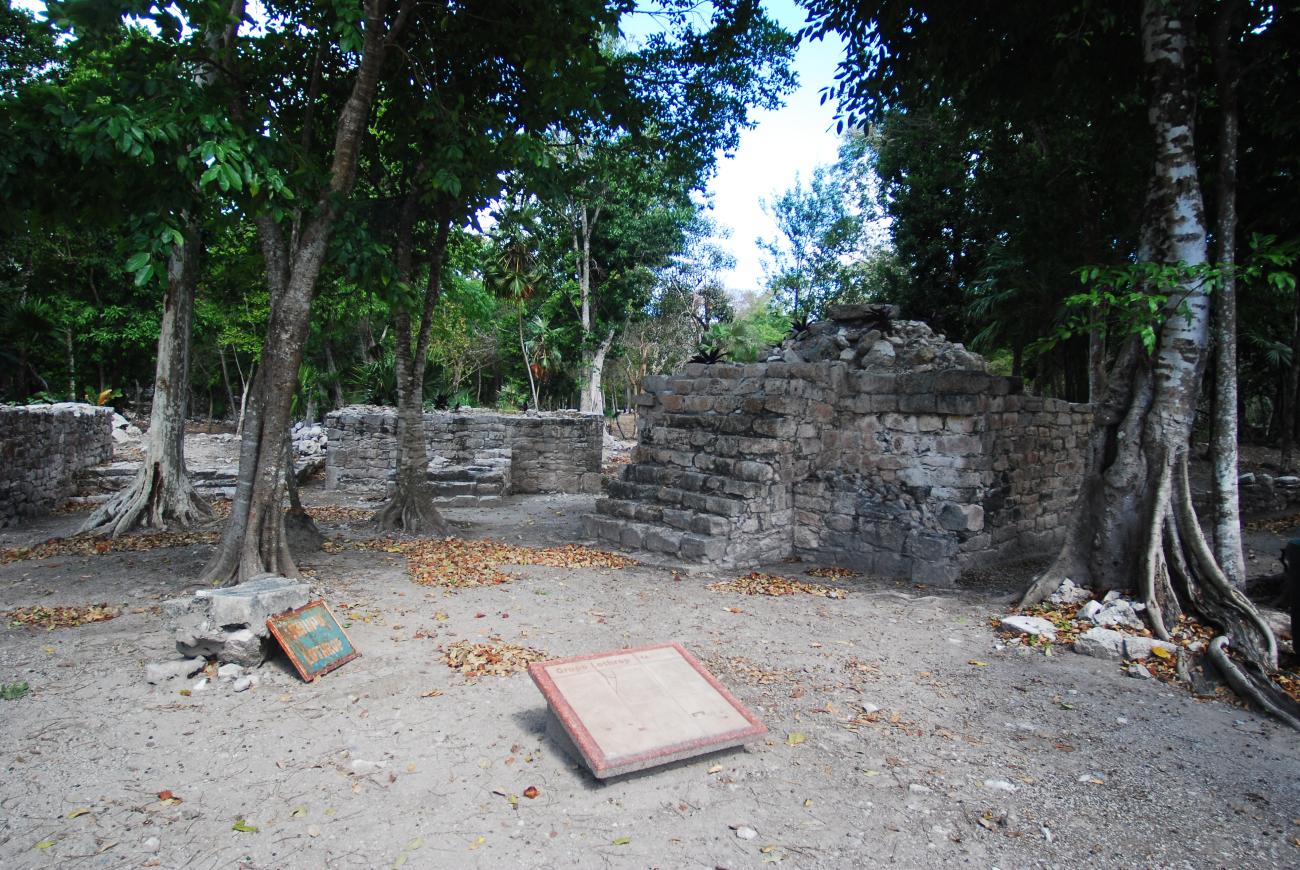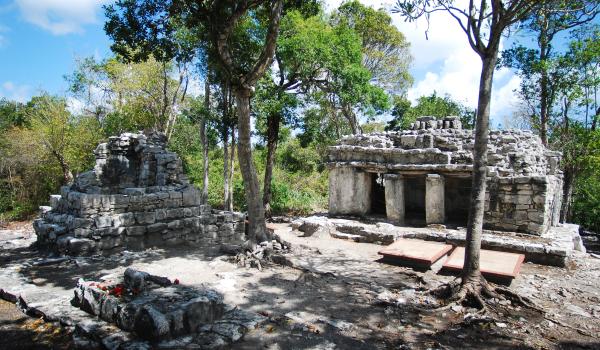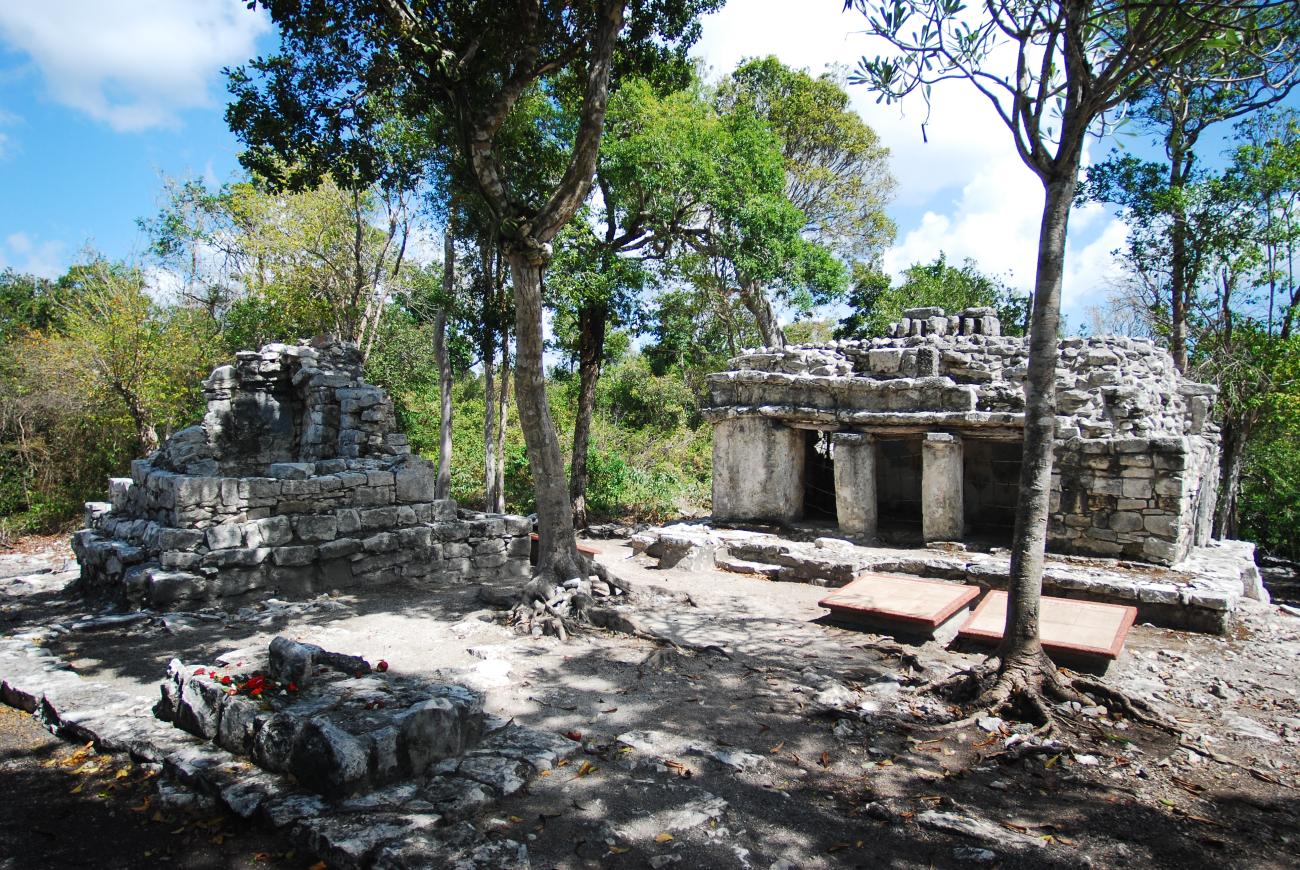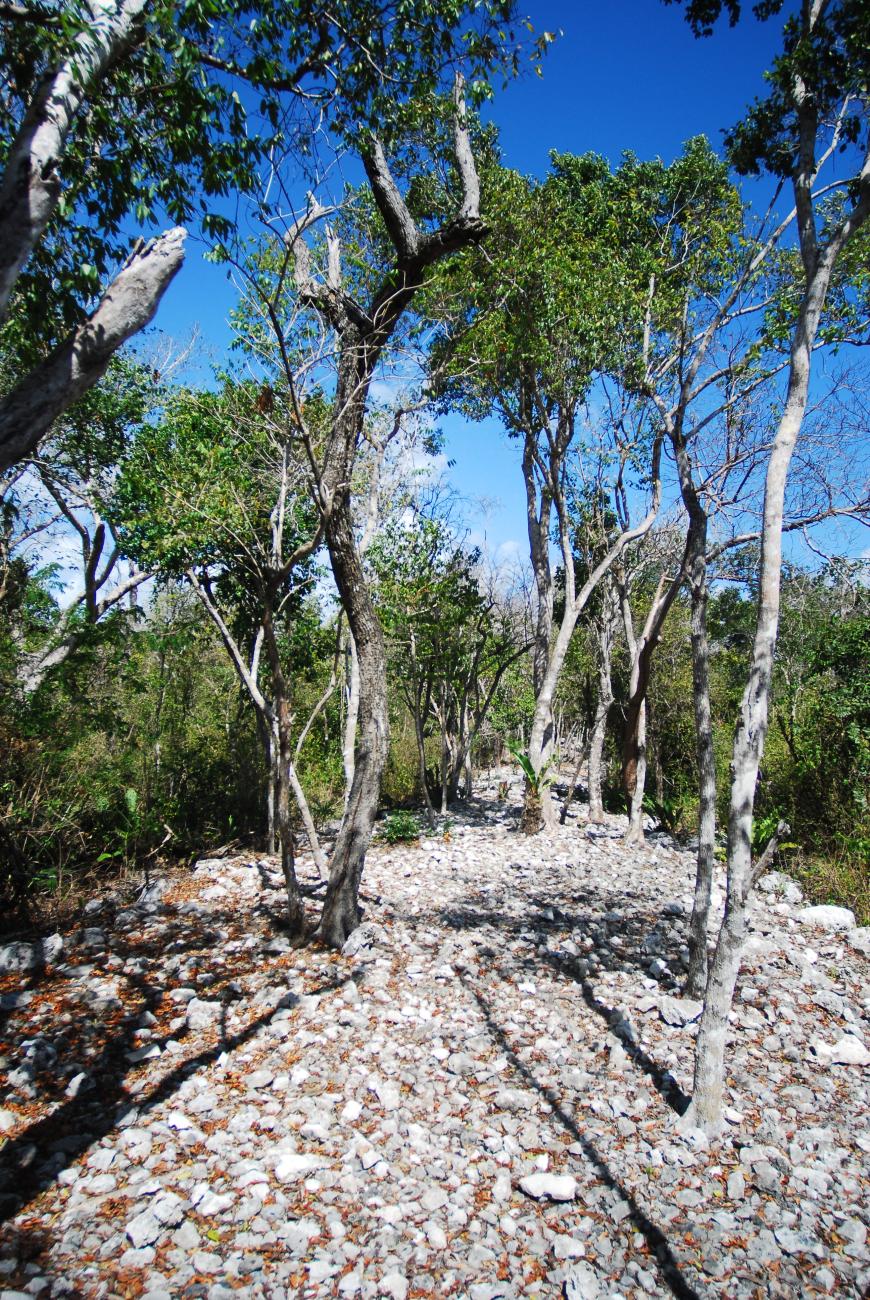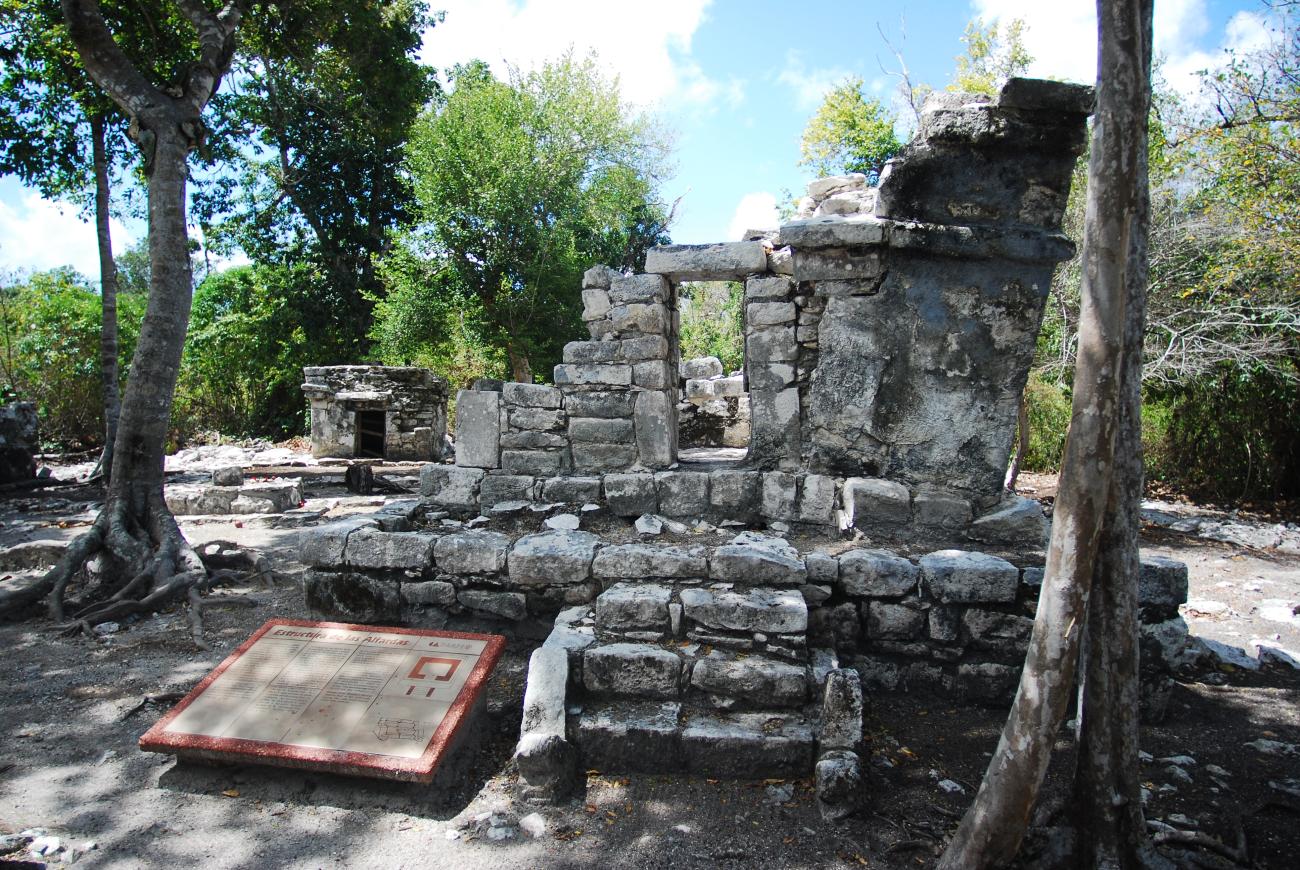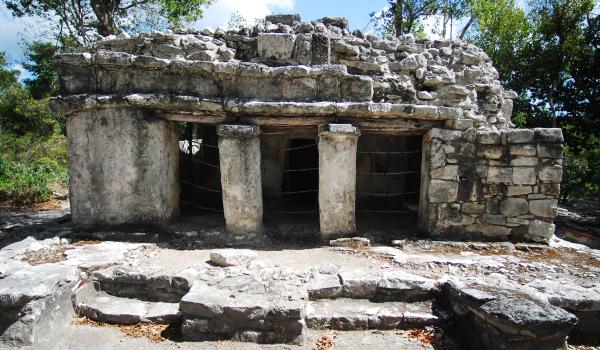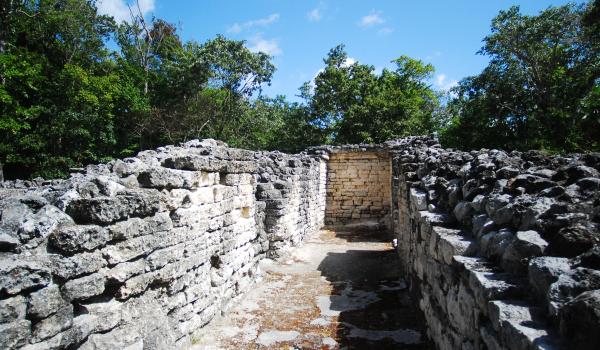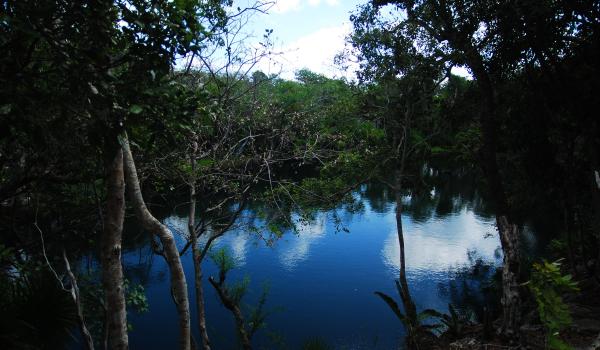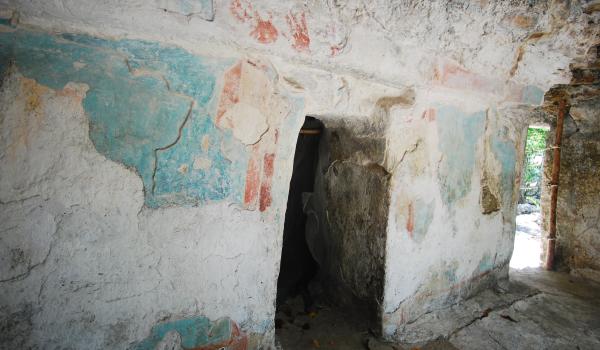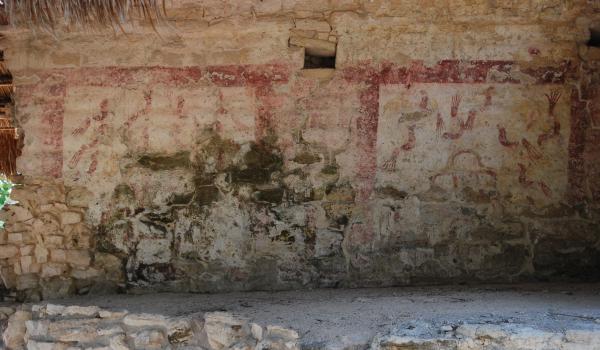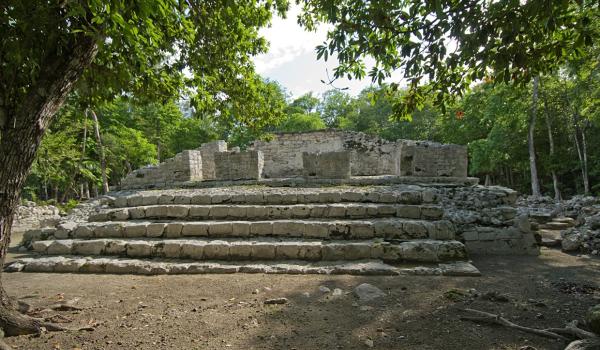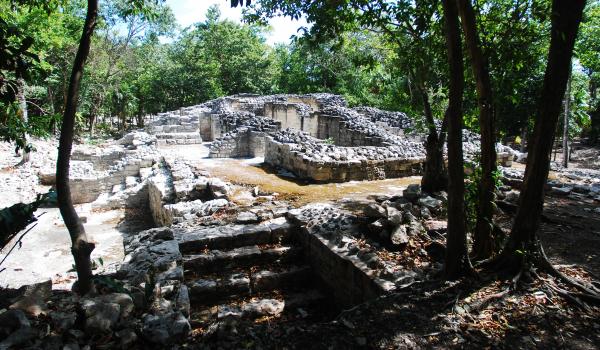It includes the structure El Palacio, where mural paintings are preserved, among which stand out fresco representations of various birds of the region, as well as the image of a supernatural being of evident Teotihuacan style. During the construction of the highway, in the seventies of the XX century, part of this structure was destroyed.
The Palace: It closes the square in its southwest end and consists of several constructive stages. The first comprises a rectangular base with rounded corners and sloping walls. In its superior part two rooms were built with entrances to the east and west, and vaulted ceilings that at the present time are not conserved.
Subsequently, a series of additions were made, such as the two rooms on the north side connected to each other. The entrance was multiple and they were reached by a wide staircase. Finally, all the rooms were walled with large stones and the building was transformed into a large basement, possibly to support a house built with perishable materials.
Mural of Room 1: It is composed of red squares framing two scenes separated by a column, in which it is still possible to see the glyph Ahau, which means chief or lord and is also the name of a day. In the painting two types of birds can be seen flying above a construction that makes us think of cages. One group of these birds is of the species of yellow parrots with short tails and curved beaks; the other is of red birds with yellow wings, long tails and black beaks. The arrangement of the images in this mural speaks of an allegory of nature. It is colored in yellow and sienna red, all on a white background. It was elaborated during the Early Classic (300-600).
Mural of Room 2: It is a symmetrical composition divided into four rectangles. The first one is a kind of checkerboard (grid) divided into red, gray and yellow colors. The central motif is a huge anthropomorphic figure, painted from the chest upwards with the colors sienna red, turquoise blue, white and yellow; on his head he wears a headdress composed of a horizontal band adorned with feathers and a scroll in the center; the figure is provided with bracelets and necklaces. This composition has Teotihuacan stylistic influences and corresponds to the Early Classic (300-600).




